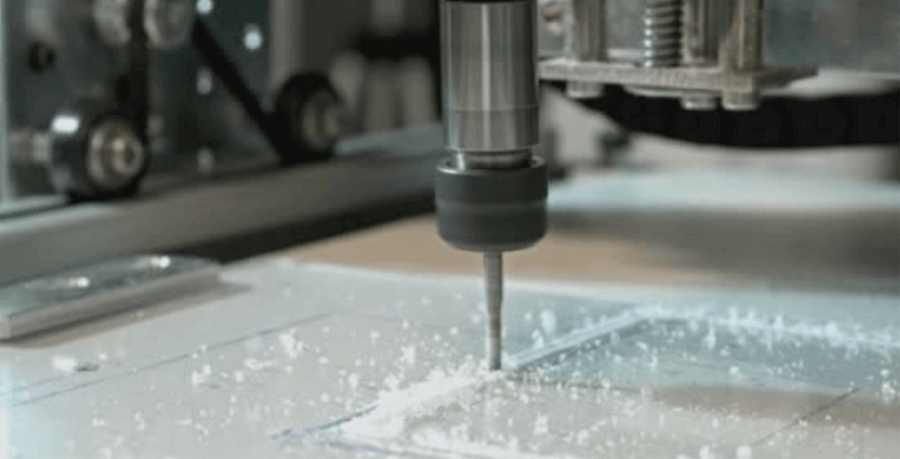Manufacturers tend to use metals such as nickel and stainless steel for high-performance applications because of their high heat resistance. For example, nickel-based alloys maintain their strength in an environment of high temperature, cyclic heat exposure, and high carbon content. Although metals tend to be more heat-resistant than plastics, in many cases, engineers can benefit from using heat-resistant plastics for their high-performance applications.
Heat-resistant plastics are polymeric materials that can withstand continuous operating temperatures of up to and exceeding 300° F without any negative impact on their mechanical properties.
Heat-resistant plastics are divided into two categories-thermoset plastics and thermoplastics. Thermosetting plastics are plastics that harden when heated and cannot be reshaped after curing. High-performance thermoplastics are plastics that melt when heated, become solid when cooled, and can be remelted after cooling. The structural integrity of thermoplastics is affected by factors such as the inherent glass transition temperature (Tg) and melting point of various materials. There are options for high-performance thermoplastics that maintain their structural capabilities above 150°C and short-term above 250°C.
In addition to heat resistance, they can also exhibit chemical resistance, corrosion resistance, low material weight, electrical and thermal resistance, and other favorable characteristics, depending on their composition. These different qualities make them suitable for a wide range of industrial applications.
Below, we focus on some of the best heat-resistant plastics and their characteristics to help readers determine which one is suitable for their needs. In addition, we also outline some typical applications where heat-resistant plastics are used.

There are many types of heat-resistant plastics available, each with unique advantages and disadvantages, making it suitable for different applications. Below is a list of 4 heat-resistant plastics that have been thoroughly researched:
- PTFE (Polytetrafluoroethylene)
- PEEK (Polyetheretherketone)
- PEI (Polyetherimide)
- PAI (polyamide-imide)
PTFE (Polytetrafluoroethylene).
Polytetrafluoroethylene-usually known by the brand name Teflon™-has a low coefficient of friction and high chemical resistance. It also exhibits excellent bending strength, electrical resistance, weather resistance and thermal stability. Teflon gaskets are suitable for the temperature range of -328° F to 500°F.
It has good strength, sufficient weather resistance and good electrical insulation in hot and humid environments.
Polytetrafluoroethylene performs well at extremely high and low temperatures, but its mechanical properties are usually not like plastics at room temperature. It is sensitive to creep, abrasion and radiation, and its smoke may be toxic. In addition, it is worth noting that the processing cost of PTFE is quite high.
PEEK (Polyetheretherketone)
PEEK is a high-performance engineering thermoplastic with a semi-crystalline structure. It has the characteristics of chemical resistance, abrasion resistance, fatigue resistance, creep and heat resistance. This material is very strong and can withstand harsh environments, so manufacturers use it as a metal substitute in many applications because they allow the material to remain strong and adaptable under harsh environmental conditions. PEEK can withstand temperatures up to 310°C for a short period of time, with a melting point of over 371°C. More importantly, it has the highest tensile and flexural strength of any high-performance polymer.
Some of the disadvantages of PEEK include susceptibility to sulfuric acid, nitric acid, chloric acid, halogens, and sodium, and low resistance to ultraviolet light. It is also expensive, so it can only be used in demanding applications.
PEI (Polyetherimide)
PEI (usually only Ultem® as the brand name) is one of the few amorphous thermoplastics on the market. It is strong, chemically resistant, flame-retardant, and has the highest dielectric strength of any high-performance thermoplastic. This material has an extremely high melting point of 219°C and a maximum continuous operating temperature of 170°C.
ULTEM is one of the few resins used in the commercial aerospace industry-it beats other thermoplastics in terms of creep resistance, and it maintains well in the presence of various fuels and coolants. However, it tends to crack in the presence of polar chlorinated solvents.
PAI (polyamide-imide)
PAI is another high-performance thermoplastic with high temperature resistance, high thermal stability, good chemical resistance and high temperature wear resistance up to 275°C. PAI also exhibits high tensile and compressive strength. Polyamide-imide can be processed by injection and compression molding techniques. PAI also has excellent dimensional stability because of its high resistance to compression, impact and creep.
Heat-resistant plastic applications
Heat-resistant plastics come in many forms, and these different material forms are used to manufacture parts and products used in a wide range of industries. For example:
- Used in heat-resistant and shock-resistant parts in the aerospace, automotive and glass industries.
- Used for heat-resistant, radiation-proof, highly insulating or specific conductive components in the electrical and semiconductor industries.
- Used for sterilization and anti-hydrolysis components in the medical device industry.
- Radiation protection and anti-radiation components used in nuclear energy and X-ray technology industries.
- Used in various components in the chemical industry.
Heat-resistant plastics play a vital role in many industries. Their thermal stability combined with other advantageous properties make them suitable substitutes for metals in countless applications. In addition, depending on their composition, they may be a better material choice. For example, in some cases, replacing metal parts with plastic parts can reduce component weight, extend component life, and improve component performance.


